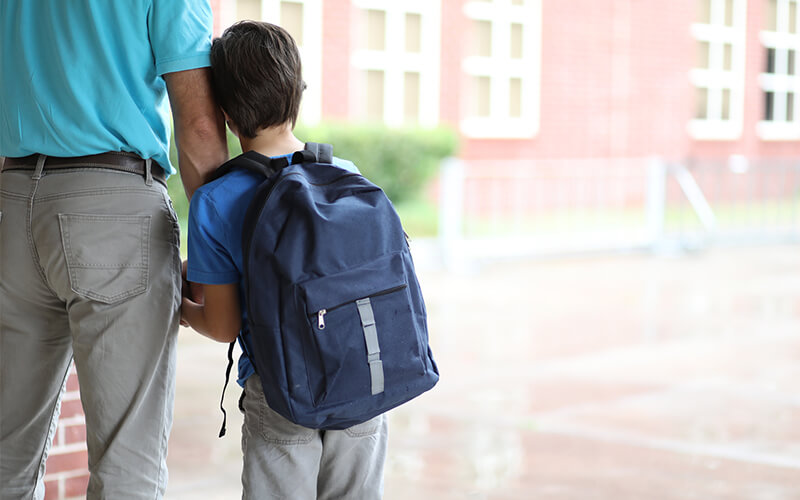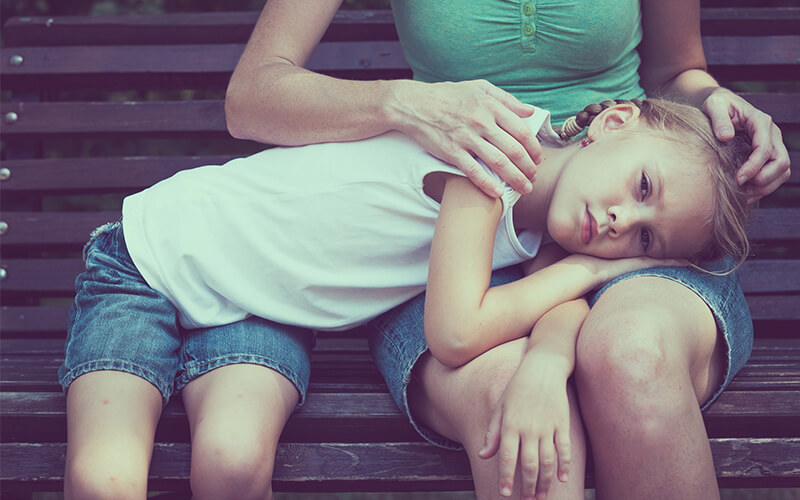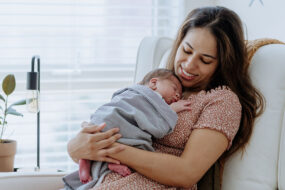Why are kids getting so anxious?
Screen time and family breakdowns are among the contributing factors but is anxiety in children really soaring, or are we just getting better at diagnosing it?
If the headlines are to be believed, modern living is causing anxiety disorders to skyrocket in children – and strike at a younger age.
But are issues such as family breakdown and too much screen time making our kids more anxious – or are we just better at diagnosing it?
Murdoch Children’s Research Institute principal research fellow Associate Professor Gehan Roberts believes it’s the latter.
“There’s a recognition among health professionals and mental health care providers that kids are presenting earlier with more severe and complex conditions,” he says.
“But when you look at the national data, it looks like numbers have remained fairly stable for mental health concerns overall.
“I think what we are seeing in recent years is a lot more community awareness and a lot more willingness by parents to consider mental health as a possible contributor to their child’s symptoms.”
The Young Minds Matter survey, released in 2015, found 6.9 per cent of Australians aged between four and 17 experienced anxiety disorders.
- Stressful times: Is anxiety in our teens getting worse?
Four types of anxiety
The report assessed four different types of anxiety disorders, with separation anxiety disorder revealed as the most common (4.3 per cent), followed by social phobia (2.3 per cent), generalised anxiety disorder (2.2 per cent), and obsessive compulsive disorder (0.8 per cent).
School-age anxiety at record levels
Heather Fopp, a manager at Centacare Catholic Family Services in South Australia, says they are seeing unprecedented levels of anxiety disorders in school children.
She says the agency has recorded a spike in students with “abnormal levels” of anxiety, accounting for 10 per cent of children seen by counsellors.
“It is evident across the whole age range within the primary school but of concern is the trend of an increased incidence in younger children aged five to eight years,” Heather says.
When is childhood anxiety a concern?
Childhood fears are a normal part of growing up, whether it’s monsters under the bed, starting school or sleeping without a night light.
But experts say anxiety becomes serious when children start to withdraw, are unhappy for long spells and refuse to take part in activities and school.
“Anxiety is problematic when it starts to interfere with normal functioning and daily activities like performance at school, socialising and family life,” Heather says.
“Professional assistance is needed if a child’s anxiety is causing significant distress.”
Heather says common behaviours also include:
- Rarely, if ever, speaking up in class
- Difficulty forming friendships
- Spending breaks at school alone
- Absenteeism or refusal to get out of the car at the school gate
- Reluctance to try new things and fear of change
- Highlighting, exaggerating or anticipating negative consequences
Physical symptoms include complaining of breathing difficulties (which could be a panic attack), sleeping problems, stomach pain, overeating or not eating.
“In addition to the above, it can be behaviour that is not developmentally appropriate,” she says.
“For example, high anxiety from a 10-year-old upon separation from parents, children reluctant or refusing to participate in normal family activities, children not wanting to leave their bedrooms.”
- Mental check: How to help someone who is not OK
The main triggers of childhood anxiety
Anxiety disorders can manifest at a young age due to a range of factors including exposure to trauma, stressful events, bullying and domestic violence.
Heather says many children can develop issues as they are feeling a strong sense of insecurity about their future.
Unfiltered viewing of natural disasters and violent events in the media can also cause children to see the world as “an unpredictable and dangerous place”.
“Other major triggers are over-protective parents who often model anxious behaviour, family breakdown that is particularly conflictual or when children are left out of appropriate communications about their future,” she says.
A US study found links between the rise of screen time to heightened levels and diagnoses of anxiety or depression in children as young as two.
- Liptember support: TV and social media star ‘wanted to end it all’
What parents can do if concerned about a child’s anxiety
“The most important thing is to not minimise their feelings,” says Associate Professor Roberts.
“If a child comes up to talk to you about these things, it’s quite a big deal.”
Parents should seek to understand and normalise the anxious feelings and seek professional help from a GP, counsellor and child psychologist if the symptoms persist or are causing distress.
Alerting the child’s school principal to the issue will also help ensure they are supported and receive a consistent response at home and in the classroom.
Tips for adults to care for children who are anxious
- Help children to understand emotions and feelings
- Encourage children to get in touch with their personal self-talk and focus on healthy thinking
- Teach problem-solving skills
- Gradually exposure them to fears
- Reward brave behaviour
- Avoid being over protective
- Be firm but empathetic
- Encourage self-regulation
If you or someone you know is experiencing depression or a mental health problem, contact Lifeline 13 11 14 or beyondblue 1300 22 4636.
Written by Elissa Doherty.








